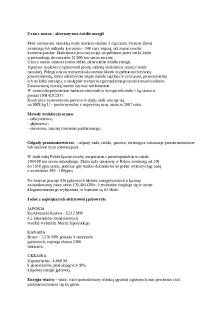Shoplifting - Lecture notes 4-5 PDF

| Title | Shoplifting - Lecture notes 4-5 |
|---|---|
| Course | Criminology |
| Institution | Georgian College |
| Pages | 2 |
| File Size | 41.1 KB |
| File Type | |
| Total Downloads | 8 |
| Total Views | 149 |
Summary
Shoplifting...
Description
Shoplifting is a common form of theft that involves taking goods from stores. The Retail Council of Canada estimates that inventory shrinkage costs businesses several billions of dollars a year. The shoplifter is usually thought of as trying to snatch goods—jewellery, clothes, DVDs, appliances— when store personnel are otherwise occupied. The socalled five-finger discount is an extremely common form of crime. Retail security measures add to the already high cost of this crime, which is passed on to the consumer. Shoplifting incidents have increased dramatically in the past 20 years, and retailers now expect an annual increase of 10 percent to 15 percent. Some studies estimate that about one in every nine shoppers steals from department stores. Discount stores have a minimum of sales help and depend on highly visible merchandise displays to attract purchasers, which make the merchandise vulnerable to shoplifters. The Shoplifter. Only 10 percent of all shoplifters are professionals who derive the majority of their income from shoplifting. Sometimes called boosters, or heels, professional shoplifters resell stolen merchandise to pawnshops or fences, usually at half the original price. The majority of shoplifters are amateurs. These snitches are usually respectable persons who do not conceive of themselves as thieves but
are systematic shoplifters who steal merchandise for their own use. They are not simply seized by an uncontrollable urge to take something that attracts them; they come equipped to steal. Usually, they have never been apprehended before, lack criminal experience, and lack association with a criminal subculture. Drifting into criminality because of situational inducements, they are unlikely to think of themselves as criminals. Shoplifters are likely to reform if apprehended because they are not part of a criminal subculture. Getting arrested has a traumatic effect, and they will likely not risk a second offence. Apprehension sometimes has a labelling effect that can result in repeated offending, but youths who are apprehended for shoplifting are usually deterred by the official processing of their offence. A first offence is often the only offence.
However, in addition to the customer who shoplifts are employees who are responsible for a significant percentage of company theft. Thinking the employer owes them something, they steal inventory or from the till. For example, undercover investigators are often hired to see whether bar- tenders are stealing....
Similar Free PDFs

Shoplifting - Lecture notes 4-5
- 2 Pages

IC Engines - Lecture notes 45
- 36 Pages

HCI-notes - Lecture notes 1-45
- 108 Pages

CS101 Handouts 1-45 - Lecture notes 1-45
- 323 Pages

CS401 handouts - Lecture notes 1-45
- 193 Pages

ENG 101 Handouts - Lecture notes 1-45
- 293 Pages

45-92 oswe - 45-92 oswe
- 2 Pages

Unité 45
- 9 Pages
Popular Institutions
- Tinajero National High School - Annex
- Politeknik Caltex Riau
- Yokohama City University
- SGT University
- University of Al-Qadisiyah
- Divine Word College of Vigan
- Techniek College Rotterdam
- Universidade de Santiago
- Universiti Teknologi MARA Cawangan Johor Kampus Pasir Gudang
- Poltekkes Kemenkes Yogyakarta
- Baguio City National High School
- Colegio san marcos
- preparatoria uno
- Centro de Bachillerato Tecnológico Industrial y de Servicios No. 107
- Dalian Maritime University
- Quang Trung Secondary School
- Colegio Tecnológico en Informática
- Corporación Regional de Educación Superior
- Grupo CEDVA
- Dar Al Uloom University
- Centro de Estudios Preuniversitarios de la Universidad Nacional de Ingeniería
- 上智大学
- Aakash International School, Nuna Majara
- San Felipe Neri Catholic School
- Kang Chiao International School - New Taipei City
- Misamis Occidental National High School
- Institución Educativa Escuela Normal Juan Ladrilleros
- Kolehiyo ng Pantukan
- Batanes State College
- Instituto Continental
- Sekolah Menengah Kejuruan Kesehatan Kaltara (Tarakan)
- Colegio de La Inmaculada Concepcion - Cebu







